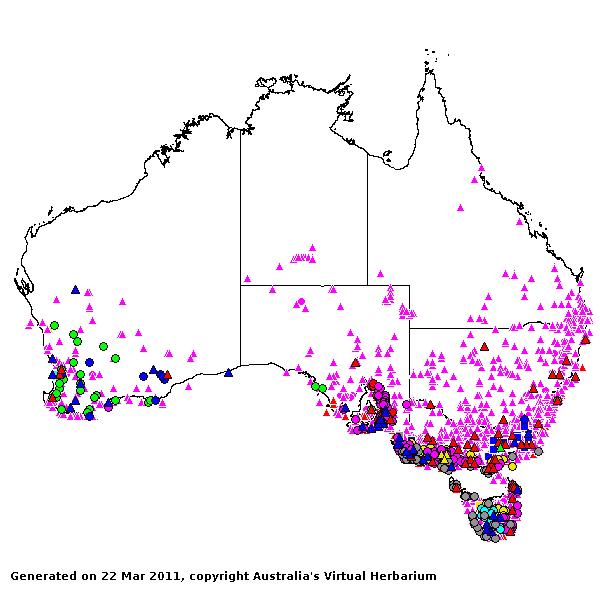Lachnagrostis Trin.. Fundamenta Agrostographiae 128, t. 10 (1820).
Derivation:. From Greek lachnos (wool) and Agrostis. Like Agrostis but lemma hairy and rhachilla elongated.
Key references (keys and floras):. D.Sharp and B.K.Simon, AusGrass (2002); J.P.Jessop, Grasses of South Australia 226–233 (2006) S.W.L.Jacobs, R.D.B.Whalley & D.J.B.Wheeler, Grasses of New South Wales, 4th ed, 289–290 (2008); A.Wilson (ed.), Flora of Australia 44A: Poaceae 2: 174–190 (2009).
W.D.Clayton & S.A.Renvoize, Genera Graminum (1986), genus (syn. of Agrostis).
20 species, from throughout temperate areas and habitats of Australasia. 16 species in Australia, WA SA NSW Vic Tas. Also New Zealand.
Habit. Annual or perennial, tufted. Ligule an unfringed membrane.
Inflorescence. Inflorescence paniculate, an open panicle with branches ending in single spikelets (often completely detaching at maturity), open.
Spikelets. Spikelets 1 flowered, with 1 fertile floret, with raceme axis extending into a bristle, solitary, pedicelled.
Glumes. Glumes more or less equal, about equal to spikelet, long relative to adjacent lemmas.
Florets. Lemmas awned, 3–5 nerved. Awns 1. Palea relatively long.
Kranz Anatomy. C3.
Classification. Pooideae; Poeae.
Types Species. L. filiformis (G.Forst.) Trin.
Biogeographic Element. Clifford & Simon 1981, Simon & Jacobs 1990: Cosmopolitan.


